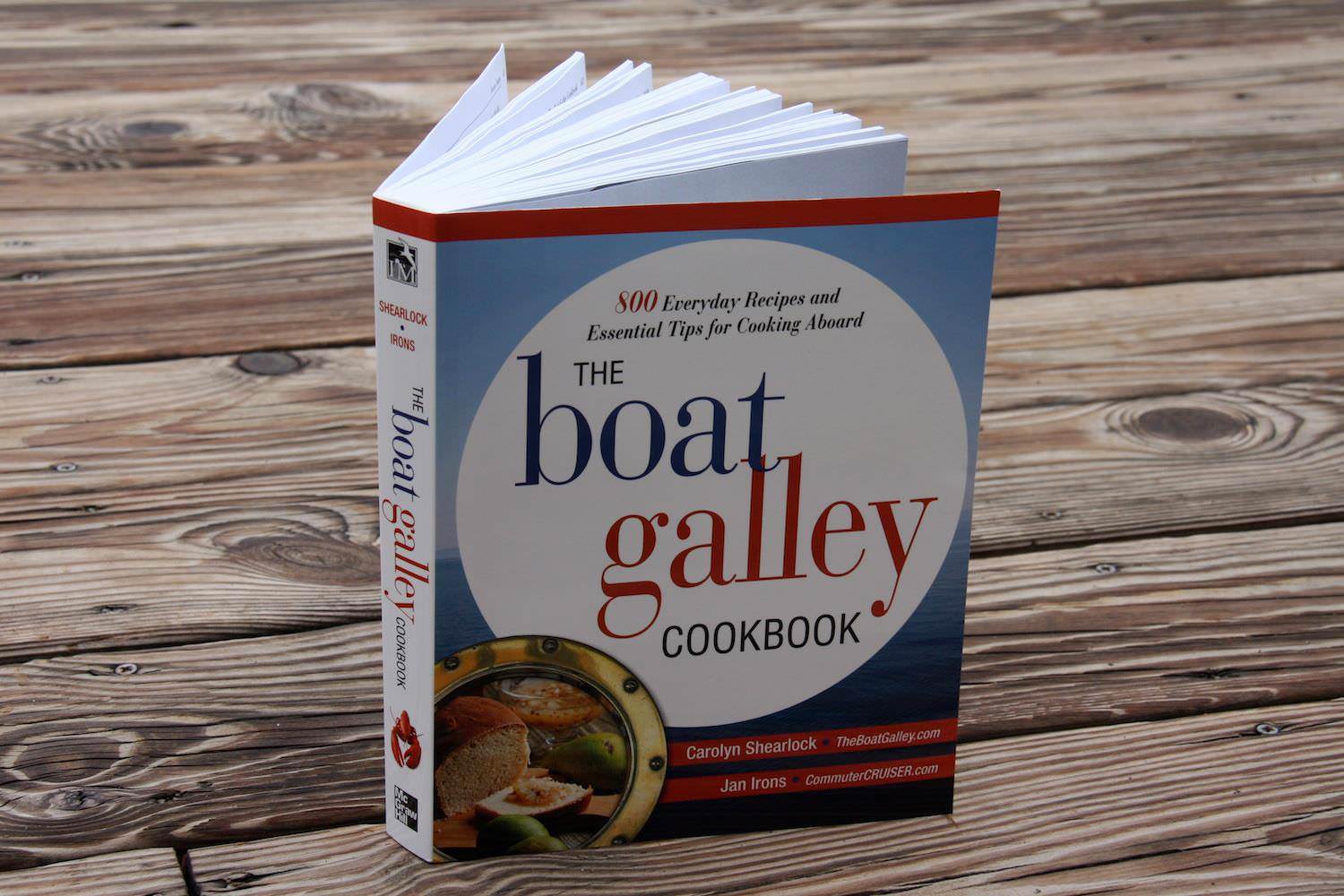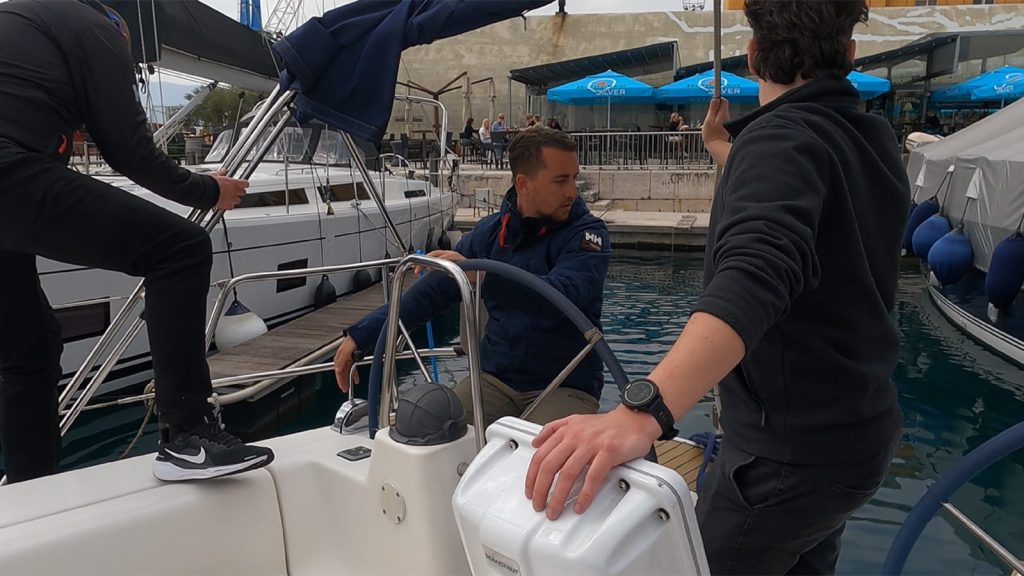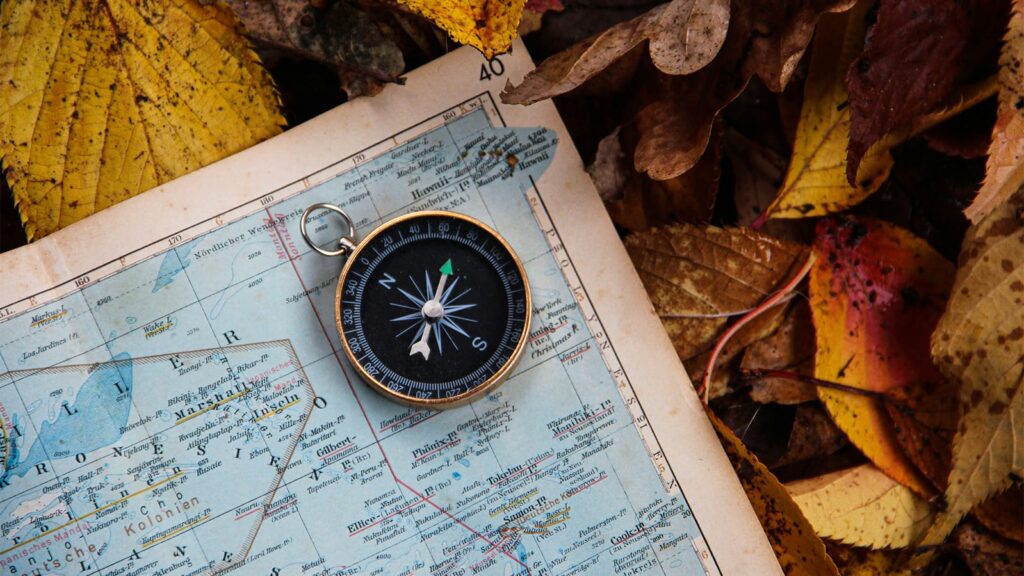Looking for some new recipes that you can actually make in your boat’s galley? Good food, but not gourmet? Ingredients you can actually find and store on your boat? Recipes that don’t require a bunch of electric appliances?
The Boat Galley Cookbook has the answers! We tapped one of the authors, Carolyn Shearlock, and said, “Carolyn! Kick us down a little boat-cooking advice!” Here is what she provided:
Canned meats are great for cruising for several reasons. “Fresh” meat may look or smell suspect, or you may not have much (or any) refrigerator and freezer space. The good news is that it seems that the smaller and more remote the village, the greater the chance of finding a wide variety of canned meats. This is particularly true in fishing villages where few homes have electricity.
I buy most meats in 6-ounce cans that look like tuna cans—they’re just right for one meal for two people. There’s ham, chicken, turkey, tuna, crab, shrimp, corned beef, roast beef, corned beef hash, clams, salmon, oysters, and even chili—and we’ve had all of them at one time or another in the US, Mexico and Central America.
It’s not hard to prepare great meals from canned meats. Through the years, I’ve learned a few tips to ensure good results:
Add the meat as late in the cooking process as possible. It’s already cooked, so all you have to do is warm it up.
Once you’ve added the meat, stir as little as possible so it won’t turn to mush. This is particularly true of chicken, turkey, and beef, and is one reason these meats shouldn’t be added until the very end of the cooking time, and can be just warmed through.
• Ham is the only meat that you need to “crumble” or break apart as you add it to the other ingredients. All other meats should be handled very gently.
• Don’t overcook other ingredients to the point where they lose their texture and become a “blob” with the meat.
• Add one-half to one bouillon cube of an appropriate flavor to make up for the fact that you don’t have drippings from browning the meat. The bouillon cube replaces salt in most recipes.
• Drain the liquid from the can and use it in the cooking process (ditto for any canned vegetables you use). It will add a lot more flavor than plain water.
• Some casseroles work well with canned meats; others don’t. In general, ones using firmer meats such as ham and roast beef turn out the best.
You can create really good meals from canned meats, so there’s no need to think of them as emergency rations. There are more than ninety great recipes designed just for canned meats in this chapter.
Once you’re familiar with the techniques for using canned meats, you’ll see that they can be used in lots of other dishes, including family favorites. And many of the recipes in this chapter can also be made with fresh meat; just adjust the cooking technique.
Here’s a dish that will have people saying, “This is canned meat? No way!”
Chicken or Beef Enchiladas Serves 2
Total Time: 30 minutes
Prep Time: 10 minutes Bake Time: 20 minutes
1 cup canned black, pinto, or kidney beans, drained and rinsed 1⁄2 cup diced onion or green onion, including tops 1 can (8 ounces) corn (optional)
1⁄4 cup sour cream OR 1⁄2 cup refried beans
1⁄2 cup shredded cheese—Monterey Jack, Colby or cheddar is best
1⁄2 tablespoon chili powder
1 teaspoon ground cumin
1⁄2 teaspoon dried oregano
salt and pepper, to taste
1 can (6 ounces) chicken or roast beef, drained, 4 small tortillas (flour or corn)
1⁄2 cup salsa, diced fresh tomato, canned diced tomatoes, or tomato sauce
1. Preheat oven to 350°F.
2. Mix the beans, onion, corn, sour cream, cheese, chili powder, cumin, oregano, salt, and pepper; stir to combine. Gently mix in the meat. Spoon the mixture onto the tortillas and roll them.
3. Place the enchiladas in a greased baking pan. Spoon any remaining mixture around and over the enchiladas. Spoon the salsa over the top. Bake for 15 to 20 minutes, or until the cheese is melted and mixture bubbles.









